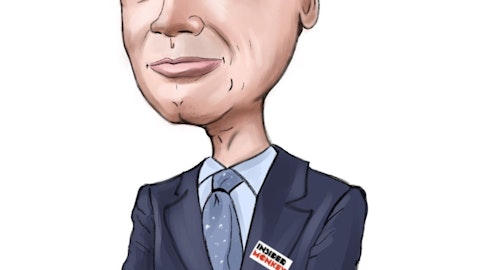We just didn’t see that in ’21 and in ’22 or ’20 either because most of ’20 was really good. So in ’20, ’21 and the first half of ’22 when we had still a very healthy environment, we just didn’t see the oversupply. And so I think that’s partly why you see our asset-based Truckload business put up an 82.7% operating ratio in a fourth quarter that is a year past peak. I mean the peak was fourth quarter of 2021. And so certainly, that wasn’t because of demand, but I think it tells us how tight supply really is. So when you fast forward that, Jack, and you think that we’re going to burn off this inventory, we’ll be back to a normal goods flow — our flow of goods come, call it, summer through the back half of the year without the expectation that there’s incremental supply at it.
In fact, we believe supply is leaving, has been leaving and will continue to leave over the next two quarters. That gives us confidence that we’ll see a much different environment in the back half of 2023.
Adam Miller: Yes. And just to add to that, Jack, I mean just looking at historical data of how cycles have typically trended, it’s unusual for rates to be down year-over-year for more than 4 quarters. I think that’s what gives us confidence in looking at fourth quarter of this year where rates could inflect positive. I think we’ve had a lot of dialogue with many of our customers. Many of those are the largest retailers in the nation, a lot of the largest CPG shippers in the nation. And independent conversations would support just their buying habits and how they change pretty dramatically in the fourth quarter and even into the first quarter. But in all those conversations, the expectation is for those ordering patterns to begin to normalize and to see those volumes really begin to pick up into that June and July mark.
So I think — so it’s not only just our view of the market looking at historic data and then our own information but also through the discussions with our customers.
Operator: Your next question comes from the line of Tom Wadewitz from UBS.
Tom Wadewitz: Dave, you talked a bit about this in your response to the first question, but just really on the cycle and how you see it playing out. I guess another kind of angle on that topic, do you think there are reasons why shippers may behave differently in the current freight downturn compared to other downturns? And I mean truckloads are highly fragmented. It’s kind of hard to get my arms around the industry behaving differently, but maybe like the largest trailer pool players behave differently. I’m just trying to get a sense of if there’s not a bigger downturn on rates or what could be partly shipper behavior is different or even large carrier behavior is a bit different. So yes, that’s the question.
David Jackson: Thanks for the question, Tom. So I would say one thing that stands out that’s a different behavior than what we’ve seen maybe historically from previous cycles is how well contractual rates have hung in there and what the demand for trailer pools has been. I think that where you see that showing up in our business is how well we’ve held on to our rate per mile. Now of course, we try to anticipate the market many months, many quarters in advance. Ideally, we’re somewhere between 6 and 12 months ahead of schedule all the time in how we anticipate and plan. And so this time last year, we were clearly increasing our commitments and moving away from the spot market. And that, of course, has served us well as you see in the results.





